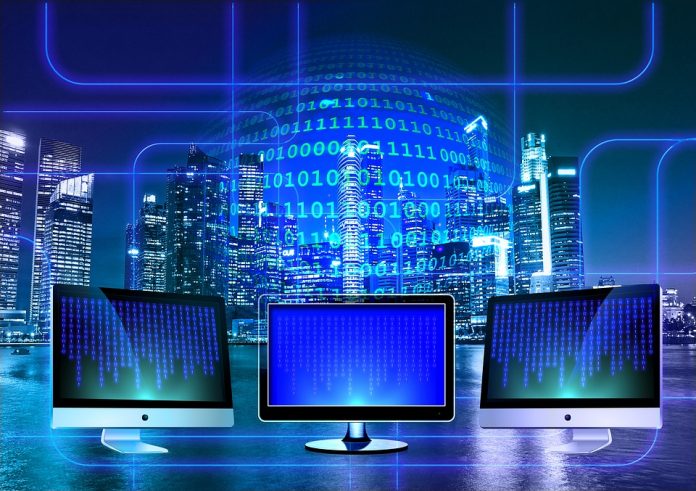Change in technology with reference to computers is known as computer generation. Firstly generation word was used for computers to differentiate between hardware technologies. Since computer is configuration of both hardware and software together, so generation includes both of them that is hardware as well as software. Computers first came into existence in the 1940s. There are five Computer generations which can be distinguished and defined and they are:
1st Generation Computers – the vacuum Tubes (1946-1959):
The first working computer was invented by J.W.Mauchy and J.P.Eckert. It was a calculator named as Electronic Numeric Integrated And Calculator (ENIAC). In the first generation computers vacuum tubes were used as the basic component for memory and for CPU (Central Processing Unit). Batch processing operating systems were employed in first generation computers.
The main Characteristics of the first generation computers are –
- Technology used: First generation computers used Vacuum tube technology. These tubes were very expensive and bulky in size. They also dissipated a lot of heat.
- Affordability: Vacuum tubes being expensive, so only big organizations used and afforded them.
- Programming Language: Binary machine codes were used as the programming language.
- Input-Output devices: Limited input and output devices like paper tapes, punch cards and magnetic tapes were in use. These I/O devices were slow to operate.
- Reliability: These computers were unreliable.
- Portability: Not portable.
- Power consumption: Consumed a lot of electricity and required air conditioners (ACs).
- Examples: UNIVAC, ENIAC, EDVAC, IBM- 650, IBM-701
Also read – Different types of computer
2nd Generation Computers – The transistors (1959-1965):
During second generation, Vacuum tubes were replaced by transistors. Transistors were invented in 1947 but as a technology in computers were successfully used in late fifties.
The main Characteristics of the second generation computers are –
- Technology used: Transistors were used as basic component for memory and for CPU, a big improvement over vacuum tubes. Transistors dissipate less heat and were faster as compared to vacuum tubes.
- Affordability: Cheaper than First generation but were still costly.
- Programming Language: Machine Language and Assembly language both were supported by computers. High-level Programming languages FORTRAN and COBOL were developed during this time.
- Input-Output devices: Paper tapes, magnetic tapes and punch cards.
- Reliability: More reliable.
- Size: Smaller in size.
- Power consumption: Consumed less electricity and required AC.
- Operating System: Batch processing and multiprogramming operating systems were used.
- Examples: CDC 3600, UNIVAC 1108, IBM 1620, CDC 1604
3rd Generation Computers – The Integrated Circuits (1965-1971)
Semi-conductor technology was introduced in third generation and thus the journey of Integrated Circuits (ICs) (invented by Jack Kilby) started. Transistors were replaced by Integrated circuits in which many resistors, transistors, and capacitors along with the linked circuitry were fabricated on one small silicon chip.
The main Characteristics of the third generation computers are:
- Technology used: Integrated Circuits (IC) were used to make computers more efficient, fast and small in size.
- Affordability: Still Costly
- Heat Dissipation: Less heat dissipation
- Programming Language: Use of high-level languages like COBOL, PASCAL PL/1, BASIC, FORTRAN etc.
- Input-Output devices: Keyboard and monitor.
- Reliability: More reliable and low maintenance.
- Operating System: Time-sharing, multiprogramming and remote processing operating system were in use.
- Power consumption: Consumed less Power and required AC.
- Examples: Honeywell-6000 series, TDC-316, PDP (Personal Data Processor), IBM-360 series, IBM-370/168 etc.
4th Generation Computers – The VLSI (1971-1980):
Fourth generation Computers used Very Large Scale Integration (VLSI) circuits. VLSI circuits incorporated about 5000 transistors, resistors and capacitors with their associated circuits on a single chip. Central Processing Units (CPUs) were replaced by Microprocessors to give birth to microcomputers of fourth generation.
The main Characteristics of the fourth generation computers are:
- Technology used: Very Large Scale Integration (VLSI) technology was employed to revolutionize the world of computers by Personal computers. Concept of pipelining and internet was introduced. Huge Developments in the networks were visible.
- Affordability: Low in Cost.
- Programming Language: Most of the high-level languages like C/C++ DBASE etc were used.
- Reliability: Very Reliable
- Portability: Due to small size easily portable.
- Operating System: Real time networks, time sharing and distributed operating systems were used.
- Power consumption: Low power consumption and no need of AC.
- Examples: STAR 1000, DEC 10, PDP 11, CRAY Super Computers
5th Generation Computers – Artificial Intelligence (1980 onwards):
Presently we are living in the fifth generation of computers. Ultra Large Scale Integration (ULSI) technology in which a microprocessor chip contains up to ten million electronic components. The time of Artificial intelligence
The main Characteristics of the fourth generation computers are:
- Technology used: ULSI technology being used. Parallel processing hardware and artificial intelligence is used. Robotics, neural networks, Expert systems, game playing and natural languages all are included in fifth generation. Presently Machine learning, Cloud computing, big data are booming.
- Affordability: Very powerful and affordable.
- Programming Language: C/C++, Java, .net, etc
- Input-Output devices: Key board, mouse, joystick, scanner, monitor, printer etc.
- Reliability: Very reliable, powerful and more user friendly devices.
- Portability: Easily portable, we can easily hand carry them.
- Power consumption: Minimal
- Examples: Desktop, Laptop, NoteBook, ChromeBook, UltraBook etc.
The Bottom Line
From Vacuum Tubes to Microprocessor chips and then to artificial intelligence, from binary machine coding to High-level programming, it is a great journey within few decades and so many milestones achieved and field of computers revolutionized.











































